Table of Contents
Introduction
In our last guide, we have seen how to install with Red Hat Enterprise Linux 7.x. The steps we are going to follow for installing Oracle Linux 7.x is similar to installing Red Hat Enterprise Linux 7.x. Below guide can be used to install in the graphical mode under any physical or virtual servers. This step by step guide will help to newbies which clearly furnished with instructions by following screenshots.
Oracle especially have there own tuned kernel for there OS in the name of Unbreakable Enterprise Kernel (UEK). Whenever we install a new server it will be shipped with both Red Hat compatible kernel (RHCK) and UEK kernels. UEK kernels are fine-tuned to use with Oracle databases.
Oracle Linux 7.x will support the maximum number of 2048 logical CPUs and maximum 64 TB of memory. The default file system of Oracle Linux comes as XFS. Moreover, it exists with BTRFS and ext4 as well.
Official Oracle stated about its minimum disk requirement as 1 GB for a minimal installation. And 5 GB as recommended disk space. Anyhow in our guide, we are about to use with below minimum requirements.
Minimum Requirements
The minimum requirement for performing a graphical mode installation required:
1 GB of Memory
1 CPU or vCPU
1 NIC
5 GB minimum disk space, But 20 GB is the recommended size.
Download URL
To obtain an Oracle Linux ISO we can get it from the edelivery cloud of Oracle download centre. You don’t require any subscription to download Oracle Linux. Moreover, we can get packages or updates from the public yum repository after the installation.
Click Here to login and download Oracle Linux ISO’s
Once the download completed, let us start to install with Oracle Linux 7.4 in our virtual machine.
To install Oracle Linux 7.x in a physical server first we need to download the ISO and burn it in a DVD, or we can create with a USB bootable media to start the installation. Hence we are using the virtual machine in our guide we are about to use the downloaded ISO file.
Starting with installation
Once the ISO started to boot by default the selected option will be highlighted in second line “Test this media & install Oracle Linux 7.x” as shown below.
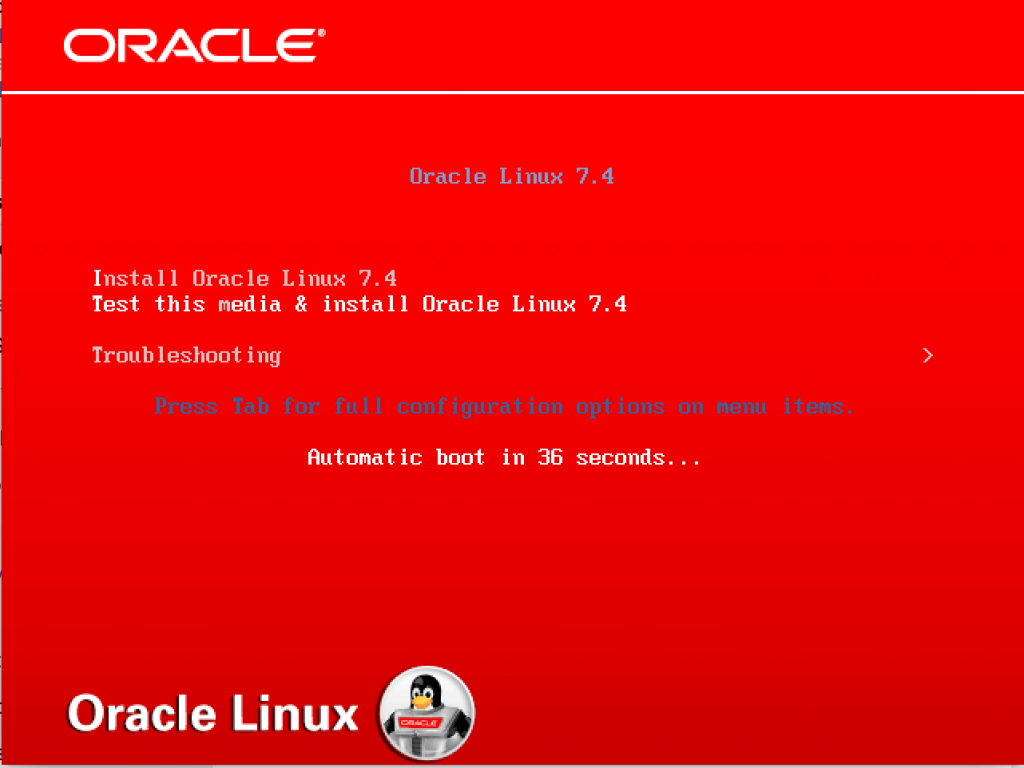
To familiar with available options in the installation screen navigate to all menus by choosing troubleshooting which will bring to know about available rescue, memory check and boot from local disk if the disk contains an operating system.

Press the enter key to start the installation or wait for 5 seconds it will start the installation automatically.

Choosing Installation Language
In the next window, we will get the list of languages to choose which need to be available during the installation process. By default, United States English will be selected. If you prefer to change your require language choose from the list and click continue.

Installation Summary Screen
By following in the next window, we will get an overview of the installation summary. Here we required to choose Date/Time, Keyboard layout, which language needs to be used in system-level, Installation source this can be Local media, HTTP, FTP. By following which software selection (What type of server need to be installed), Installation destination, Kdump configuration, network configuration and security settings.

Choosing TimeZone
By clicking on Date & Time from installation summary page we will get the Date & Time screen to choose the required timezone and time. I’m residing in India so choosing the timezone as Asia/Kolkata, By following change the time and date at the bottom. Once all changes are done click “Done” to make the changes permanent.
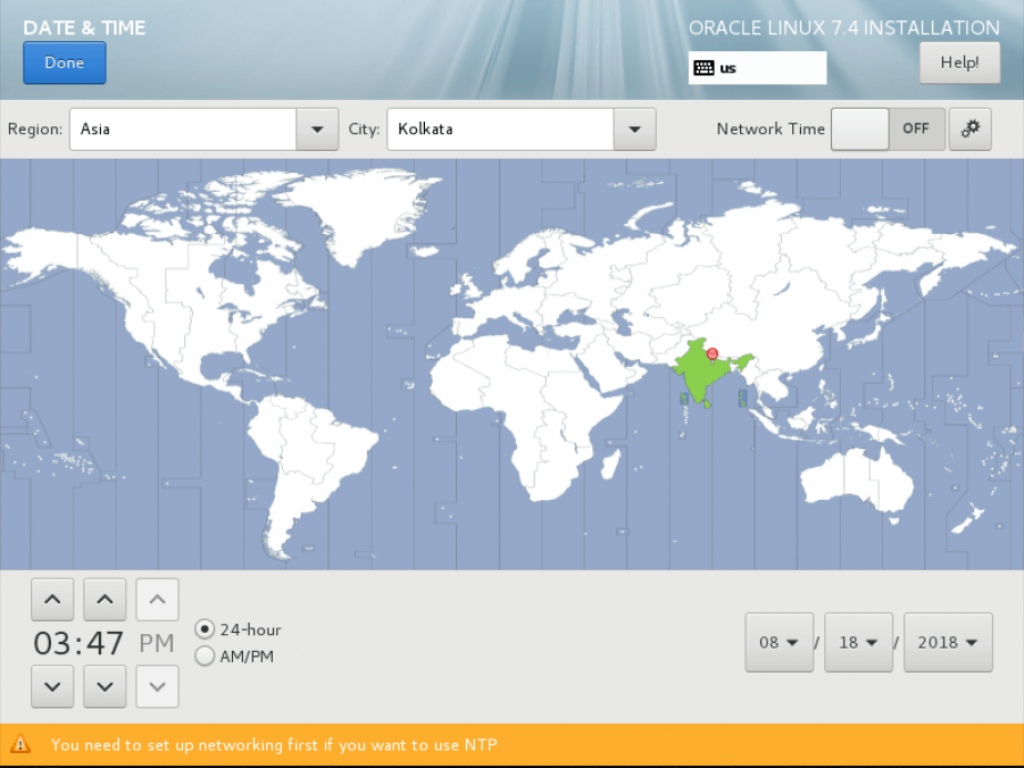
Choosing Server Type
Continue to choose other configurations to click on “Software selection” and choose “Minimal Install” under base environment to install with minimal installation, at last click on “Done” at the left top corner to make the changes and bring back to the summary window.
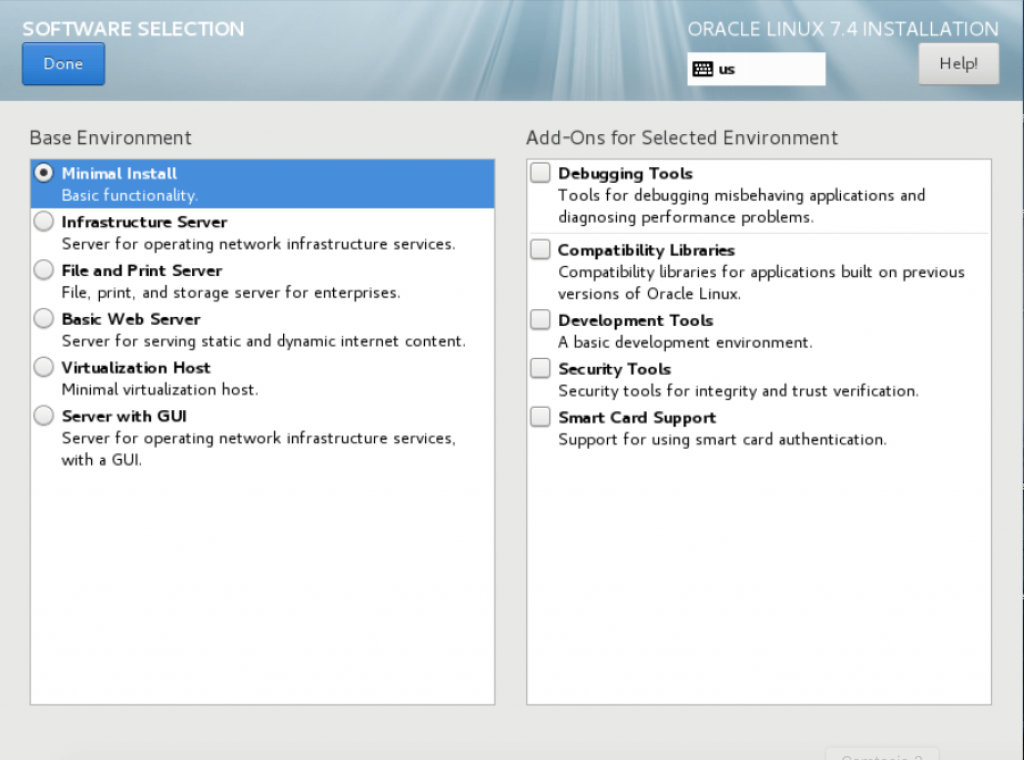
Choosing Installation Disk
Choosing the installation destination and customizing the required size of the file system is very important. Click on “Installation destination” to choose under which disk the operating system needs to be installed.

Partitioning Disk
Select the first disk and choose “I will configure partitioning” then click on “Done”. By following we will get manual partitioning screen.

Click “+” symbol to add required file system mounts.
The first step we need to add with /boot partition, Make it 1 GB in size. Under-mount point choose /boot and Under desired capacity provides the size of 1 G. When we provide with “G” it will take it as GB. Click add the mount point to add with the new boot file system.
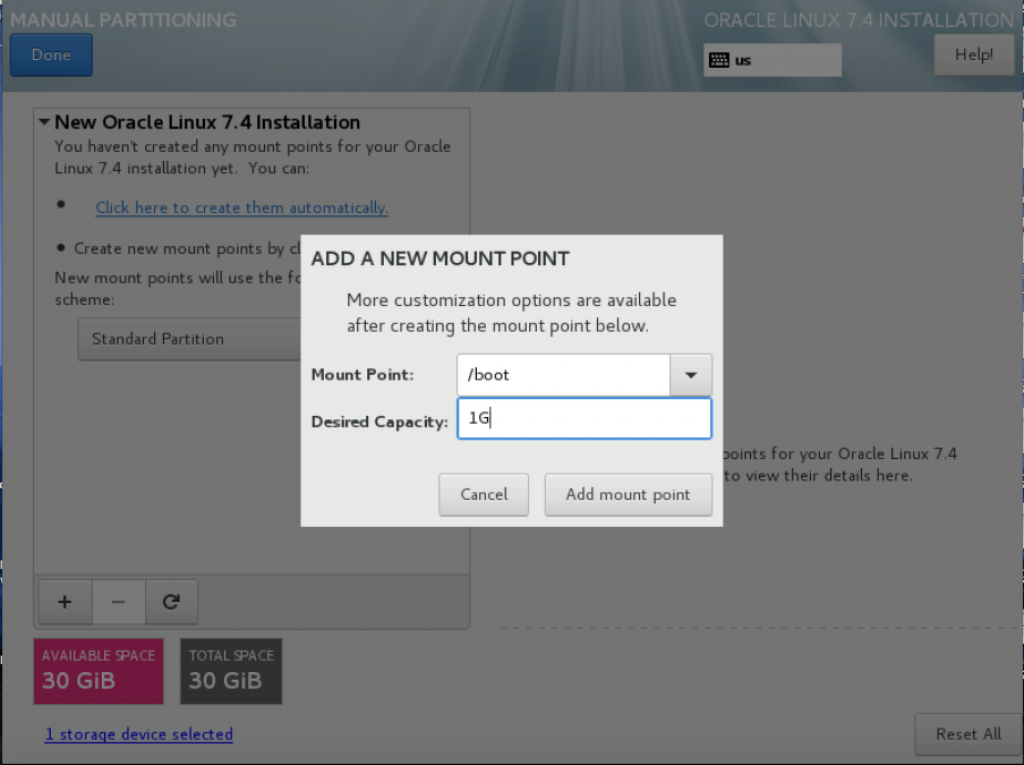
/boot Partition with 1 GB, Select the added partition and choose Device type as “Standard” for the boot mount point. Remaining file systems will come under logical volume management.

/boot as the Standard partition, By following add / with 10 G and device type as “logical volume”.

/ Partition with 15 GB, Here we need to make sure by choosing / Partition under the Logical volume management. By following add /home with 2 GB, /var with 6 GB and Swap 2 GB. Make sure to create the swap partition in 2 x size of the available physical memory.
After creating with required mount points it will appear as shown in the below figure.

Click “Accept Changes” to create with partition and filesystems.

Configure Network
Back to Summary window click “Network & Hostname” to configure with manual IP configurations.

Click configure to continue with configuring interfaces.
Under the “General” tab click “Automatically connect to this network when it is available”. In my screenshot checkbox not ticked, Kindly make a tick to start the interface persistently.

To configure the manual IP select “IPv4 settings”. Select manual under method to configure with IP information.

Slide the ON at the right top corner to activate the interface. (Ignore the below icons in my snip).

Back to summary Installation Screen
After configuring the required settings Installation summary window looks like below.
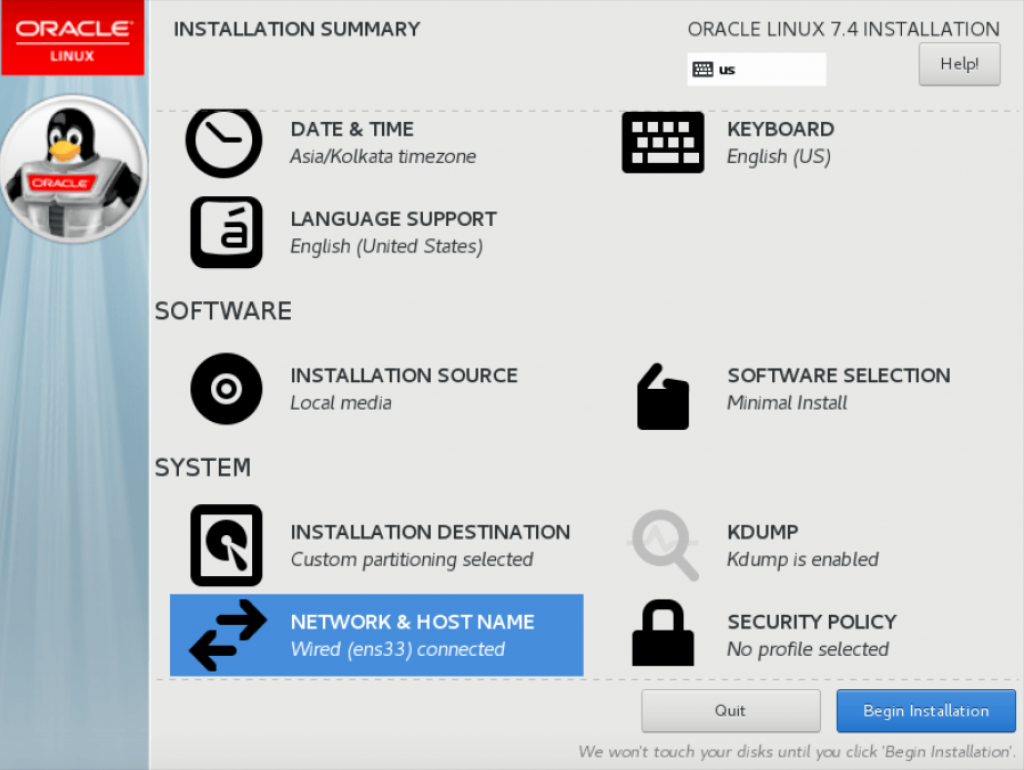
Set Root Password
Click “Begin Installation” which will bring to the next screen and ask to create with the root password.
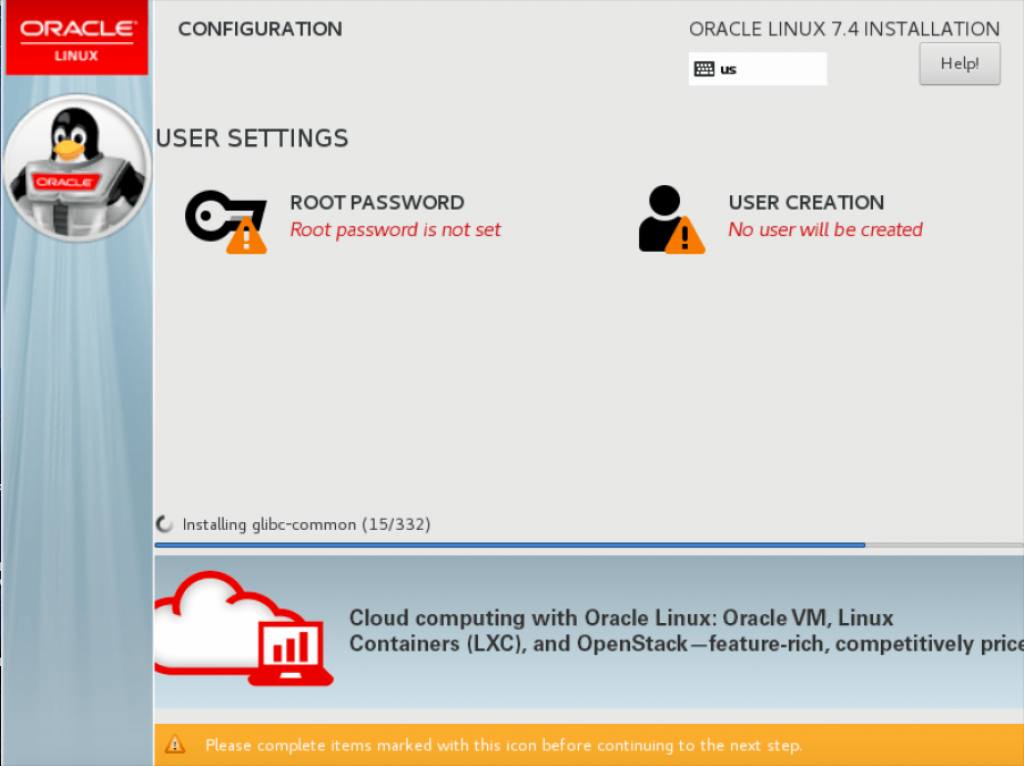
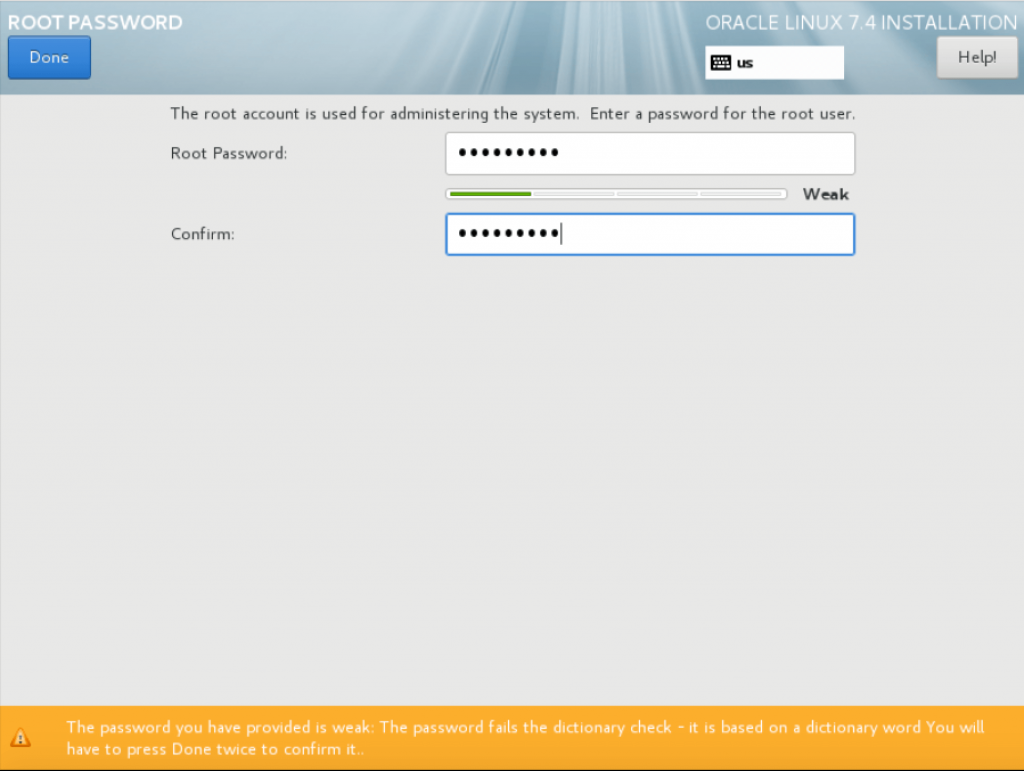
Create a Privileged User
If we required with the privileged account we can create one with SUDO.

Complete the Installation with Reboot
Once installation completed click “Reboot”.

Post Installation
A freshly installed system will look similar below before login.

Let us log in and check with few commands.

That’s it we have completed Oracle Linux installation.
Conclusion
We have successfully completed with a basic installation of Oracle Linux 7.4. If you have any other minor release version of Oracle Linux 7 above the same steps can be carried out to perform an installation. In future, we are about to cover most of Enterprise level setups which can we be done in Oracle Linux. Kindly provide your feedback by commenting in below comment section.

it is very effective
Thanks for the steps
Thanks for great effort ,it greatly hepled me to learn